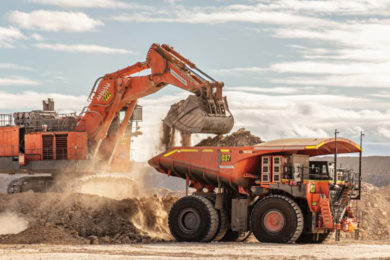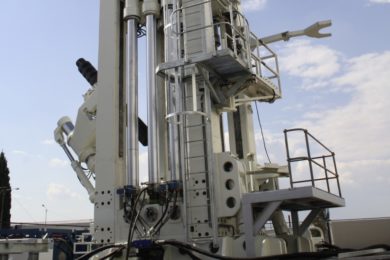Australian coal miner Whitehaven Coal exported 20.2 Mt of high-quality thermal and metallurgical coal in 2020 from its three open cut mines (Maules Creek, Tarrawonga, Werris Creek) and one underground (Narrabri) mining operation.
The company is already well known for having commissioned the first Hitachi fully autonomous truck fleet in the world which is hauling overburden at Maules Creek (the entire Maules Creek 45-strong 296 t EH5000 truck fleet is planned to be autonomous by FY2023), and more fleets will be added in the years to come. These trucks are loaded by five 800 t Hitachi EX8000 excavators and four Hitachi 360 t EX3600 excavators. Whitehaven calculates that the operating cost benefit of the 45-truck autonomous truck fleet, including a planned production increase to 16 Mt/y, will be in the range of A$3.70 to A$4.10 per-product-tonne. Underground, Whitehaven’s Narrabri longwall is also fully automated and is one of the most advanced in Australia.
But in tandem with maximising production with autonomy the company also continues to address other areas like equipment fuel efficiency & the operator environment. First off on fuel consumption and working closely with Cummins and Hitachi, Whitehaven has rolled out updated fuel calibrations on its fleet of 17 Hitachi EH4000 diesel-electric trucks at the Tarrawonga mine during FY2020. “Minor changes in engine/truck control software to improve fuel efficiency will enable us to reduce fuel consumption by 6.6%, which represents a saving of 10 litres of fuel per hour or approximately 600 kilolitres over the course of a year.”
Across at Maules Creek, testing with Cummins has already indicated an annual saving of around 1.1 million litres for the EH5000 truck fleet if engine downspeeding was introduced. This would see maximum engine speed reduced from 1,900 to 1,800 rpm. A further fuel saving – estimated to range between 1.5 and 5% – is achievable by reducing the amount of time the engine fan operates. By installing electric fans for brake and fuel cooling, engine fan operation is reduced by 30%. Some of this optimisation work is using Cummins’ new digital monitoring and reporting solution, PrevenTech, the aim of which is to help mines identify and diagnose performance issues faster and more accurately.
Also at Maules Creek, a team identified an opportunity to reduce dust exposure among drill rig operators. The maintenance team at Maules Creek looked at a range of ways to reduce the amount of dust entering drill rig cabins, including checking the endurance of door seals, fitting on-board wash-down units to wash away material that settles on the exterior of the cabs, and re-engineering the cabin mountings to prevent cracking.
The team identified that cabins were not pressurising correctly and, after investigating a range of filtration systems, opted to install High Efficiency Particulate Arrestance (HEPA) dust filtration systems into the cabins of drill rigs. While drill rigs already have standard cabin pressuriser systems, the new HEPA system is superior as it has a variable displacement motor that monitors the existing pressure of the cab and adjusts its output accordingly, constantly maintaining the set pressure.
“This type of system is not standard on mine equipment and, historically, has not been commonly used at coal mine sites. The selected system uses more sensitive filters, resulting in less dust entering cabins, which lowers personal worker exposure, and therefore the risk of dust-related lung disease. Finally, system data is downloadable, allowing the maintenance team to proactively diagnose issues.”
A real-time dust assessment on two drill rigs at Maules Creek, conducted by Coal Services in February 2020, compared the airborne dust collected in the cabins of a rig fitted with the HEPA dust filtration system to that of a rig fitted with the old filtration system. The test found the drill rig fitted with the HEPA system maintained 56% less airborne dust, confirming the effectiveness of this novel application. “This is validated by positive feedback from operators, who attest to a visible improvement in the condition of the cabs, and we will look to progressively roll out the system across all mobile equipment.”










